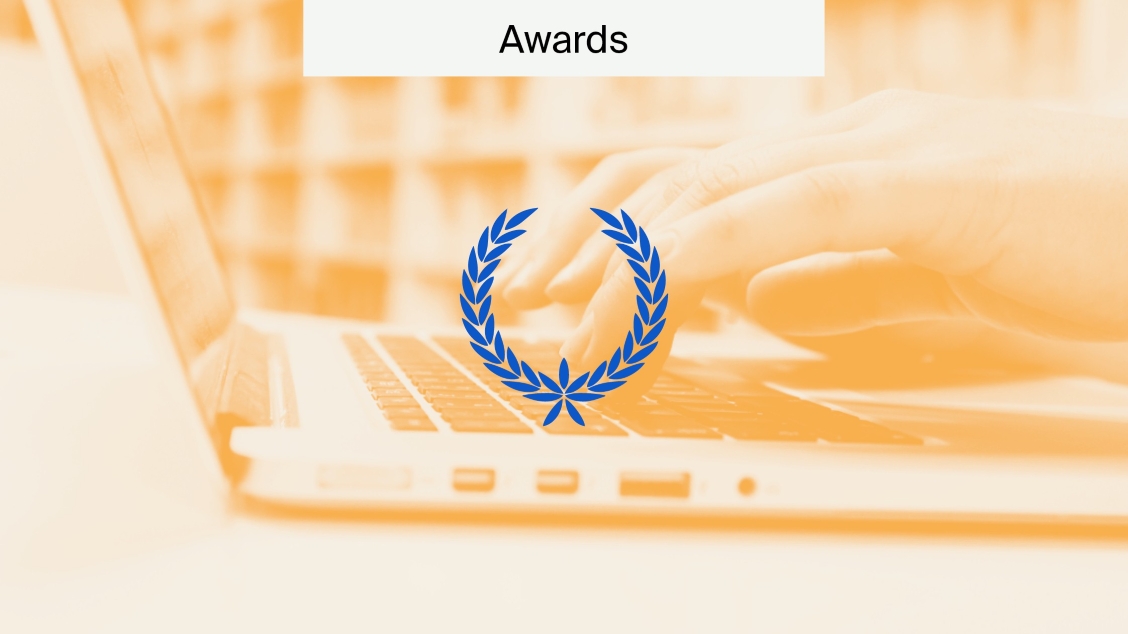
International Day of Education 2025: AI in the Classroom
Today, 24th January, is the International Day of Education. The provision of quality education for all is specifically mentioned in Sustainable Development Goal 4 (SDG4). Quality education is relevant to all 17 SDGs as it shapes the way we understand and comprehend the world.
“Ensure inclusive and equitable quality education and promote lifelong learning opportunities for all.” – SDG 4
This year’s United Nations Educational, Scientific and Cultural Organization (UNESCO) theme for the International Day of Education is ‘AI and education: Preserving human agency in a world of automation’. It brings attention to the increased use of Artificial Intelligence (AI) in education, encouraging reflections on education’s power to equip individuals and communities to navigate, understand and influence the role AI plays in this sector.
To mark the International Day of Education at MDPI, we’re exploring the role of AI tools in the classroom, as well as research in our journals that explores the capabilities and limitations of AI as applied to education.
AI in educational settings
Over the last few years, we have witnessed an increased reliance on Generative AI (a subset of AI that can create original content) in educational spaces. However, a lack of knowledge on how best to utilise these tools has presented issues in relation to student autonomy and agency over learning.
In a survey recently conducted by the Digital Education Council, including participants in higher education from across 16 countries, 86% of students reported using AI tools in their studies, with ChatGPT being the most used AI tool, followed by Grammarly, Microsoft Copilot and Google Gemini.
Yet, the existence of frameworks for institutions guiding students in their use of AI is sparse. In light of this gap, the UNESCO has developed new AI competency frameworks for students and teachers, which will likely underpin best practices for the adoption of AI within classrooms in the future. Adopting these guidelines will help teachers and students to navigate the adoption of AI in education while considering key tenets such as fairness, transparency, privacy and accountability.
Becoming AI literate
The concept of human agency is currently undergoing profound change in relation to AI. This is especially so in education, which is already experiencing rapid transformation due to the increased use of AI by students and teachers.
However, there is a growing gap in knowledge regarding how best to implement AI tools for both teachers and students as AI becomes more widely available. Here are a few things to consider when adapting to the increased use of AI in the classroom:
Understand how AI tools work
The first step to using AI tools effectively is to have a foundational knowledge of how they work. Tools like ChatGPT are known as Large Language Models (LLMs). This means that they are trained on large datasets, learning to detect patterns in human-created texts. By analysing the words input by a user, these tools use pattern recognition to generate their responses. You can learn more about how LLMs function in a previous blog post here. There are also other resources out there to help you to become more familiar with AI tools, such as the AI Pedagogy Project at Harvard.
Validate your information
LLMs are not designed to be accurate; rather, they are designed to seem accurate. This means that they should be used with caution. Checking any information you receive from the LLMs is essential, as they are known to often have what are termed as ‘hallucinations’—providing inaccurate information as if it is accurate.
Understand the limitations of datasets
While LLMs are trained on large datasets, it is important to keep in mind that they might not contain the most up-to-date information. When using them as supplements to learning, ensure that you use your own research skills to maintain accuracy and ensure the relevance of information students receive.
Foster critical thinking skills
ChatGPT and other tools are not able to apply critical thinking skills, which is why the interaction between teachers and students is paramount. Guidance from teachers, such as asking open-ended questions, discussing reasoning and providing children with the opportunity to problem-solve are crucial to developing critical thinking—something that LLMs are not designed to do.
Develop inclusive practice
AI and other tools such as VR can be leveraged to better include students with disabilities; for example, tools like these can be used as writing aids to assist students with dyslexia, simplify complex information for students with reading difficulties and act as an aid by answering questions.
AI and the Convention on the Rights of Persons with Disabilities
Around 15% of people worldwide have some form of disability, ranging from physical to sensory and intellectual. The Convention on the Rights of Persons with Disabilities (CRPD), adopted by the UN General Assembly in 2006, aims to promote ‘quality, inclusive education’ for people living with disabilities. The Office of the High Commissioner for Human Rights (OHCHR) notes that to achieve this aim requires a ‘transformation in culture, policy and practice in all formal and informal education environments’.
The introduction of AI into the classroom is already leading to a transformation of teaching spaces—what is left to be figured out is how to leverage such tools to help achieve the aims of the Convention.
Artificial Intelligence: advancing inclusive education
A paper recently published in the journal Education Sciences, titled “Impact of Artificial Intelligence and Virtual Reality on Educational Inclusion: A Systematic Review of Technologies Supporting Students with Disabilities”, elaborates on how students with disabilities can benefit from the utilisation of GenAI tools.
In their paper, the authors make the point that integrating AI and VR tools could be useful to achieving inclusion and equitable learning outcomes, as AI-driven adaptive systems can ‘dynamically tailor learning experiences to individual needs’. Their review investigates the use of AI and VR tools in enhancing ‘educational accessibility, personalisation and social inclusion in education’.
The main point made by the authors is that while tailored learning plans can be created by teachers alone, using GenAI tools allows for greater efficiency and scalability. This is because AI tools can reduce the cognitive and administrative demands that are inherent to building tailored learning plans for individual students. Additionally, by collecting real-time data based on student interactions, AI tools can adapt learning plans and materials to best suit student needs more immediately.
“These technologies are not merely supplementary tools but rather essential components that can redefine instructional methods, enabling a more equitable classroom experience for all learners.”
The datafication of education
One of the key roles AI is playing in education is in determining the performance of students as well as staff, school and course performance. It does so as part of a process known as ‘datafication’, defined as the translation of social and natural worlds into quantifiable data.
Datafication, over the last decade, has become increasingly apparent, and important, in education. Collecting and analysing data related to student performance and engagement and staff, school and course performance has guided the development of large datasets that aim to improve these key metrics.
A research article published in the journal Encyclopedia looks specifically at educational data mining (EDM), providing a foundational overview of the way data can be extrapolated and put to use in the sector.
Educational Data Mining
Educational Data Mining focuses on ‘developing and applying methods to analyze datasets generated within educational settings’. The aim of the discipline is to develop techniques to answer key questions in the education sector, supporting student learning and providing new insights for teachers.
EDM integrates machine learning techniques, didactics and cognitive psychology, being characterized by its interdisciplinary approach. Briefly, collecting data in education has multiple benefits, which are as follows:
- Helping teachers to understand students’ learning process: understanding and quantifying the effectiveness of different learning methods can help teachers to adapt their teaching, and to identify students who may need different forms of learning support at an early stage.
- Supporting data-driven decision making: Educational data mining provides an opportunity to drive decision making based on data from learning environments.
- Improved feedback: The large amount of data provides constant feedback for teachers and decision makers on the trajectory of students’ learning outcomes.
- Promoting a tradition of ‘constant enhancement’: EDM can help to build an understanding of learning in greater detail, identifying areas in which efficiency and effectiveness can be improved on continuously.
The increase in student interactions with digital learning platforms has produced massive amounts of data that can be extrapolated through EDM, providing insight into how students gain knowledge in modern learning environments. Not only can such data supplement teachers in improving learning outcomes, but it can also help to shape teaching methods and create greater coherence for curriculum building.
Data aggregation and ethical implications
Data collection, especially on such a large scale, has led to a number of ethical considerations across all industries. Collecting educational data entails collecting data on students and teachers; as noted by the authors, strict privacy protections need to be adhered to under laws such as the Family Rights and Education Act (FERPA) and the General Data Protection Regulation GDPR to ensure that student data is collected while maintaining anonymity and reducing harm, i.e., enforcing biases or implicating on students’ autonomy.
Transforming educational spaces: student perception of AI
Implementing generative AI in educational settings requires an understanding of how such tools work, as well as the ability to nurture social–emotional intelligence, as noted by the authors of a study published in the journal AI.
In this study, the authors compare the effects of AI implementation in two groups of undergraduate students studying either Early Childhood Education (ECE) or Computer Science (CS).
Of the participants, 88% believed integrating AI into teaching materials to be essential for improved learning outcomes. The design of the experiment included presenting several AI tools to the students and asking them to create learning materials using these tools.
Specifically, they investigate the interconnected impact of AI technology on academic performance, satisfaction and user experience, identifying this as a gap in the research. The study design provides scope to assess the impact of AI amongst students with varying levels of technological proficiency.
“Higher education is undergoing a rapid transformation as artificial intelligence (AI) integration accelerates digital literacy innovation”– quote from the study.
Disparities in the use of AI
The results show that computer science skills are useful for adapting to new tools, as the cohort of Computer Science students were initially less familiar with AI than the Early Childhood Education students. This gap was bridged as the students interacted with the AI tools; the Computer Science students’ technological proficiency allowed for an easier adoption of the tools.
Overall, the ECE students found the AI tools to be more useful for creating learning aids (including videos and images), reporting greater overall satisfaction. The authors attribute this to the fact that AI tools ‘directly addressed the need in ECE for creating engaging educational content’, something that has also been reported in other studies. Overall, the authors find that AI tools are of varied use and benefit depending on the area of study and prior experience with technology.
Future research directions
As AI becomes ubiquitous in educational settings, it is important to continuously assess and develop the digital literacy of students and educators. The connection between digital literacy and the rate of adoption of AI means that more work needs to be done to ensure that these new technologies are integrated in a way that maintains learner autonomy in the classroom and during independent learning.
To learn more about the current state of education, you can attend our International Day of Education 2025 webinar exploring the ways education can be leveraged to empower future generations, how best to cater to students with mathematical learning disabilities and the support that can be provided to students with anxiety.
To find out more about the impact of AI on education, and the ways that GenAi tools can best be implemented in educational contexts, you can access our wide variety of journals for further studies.










